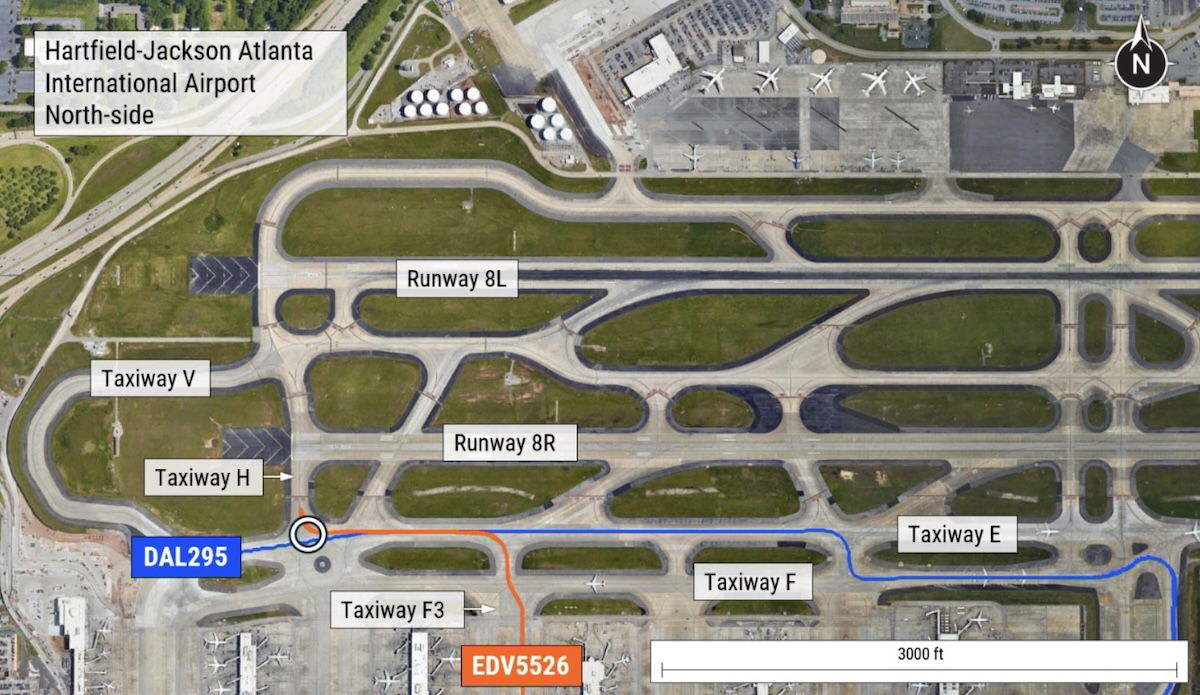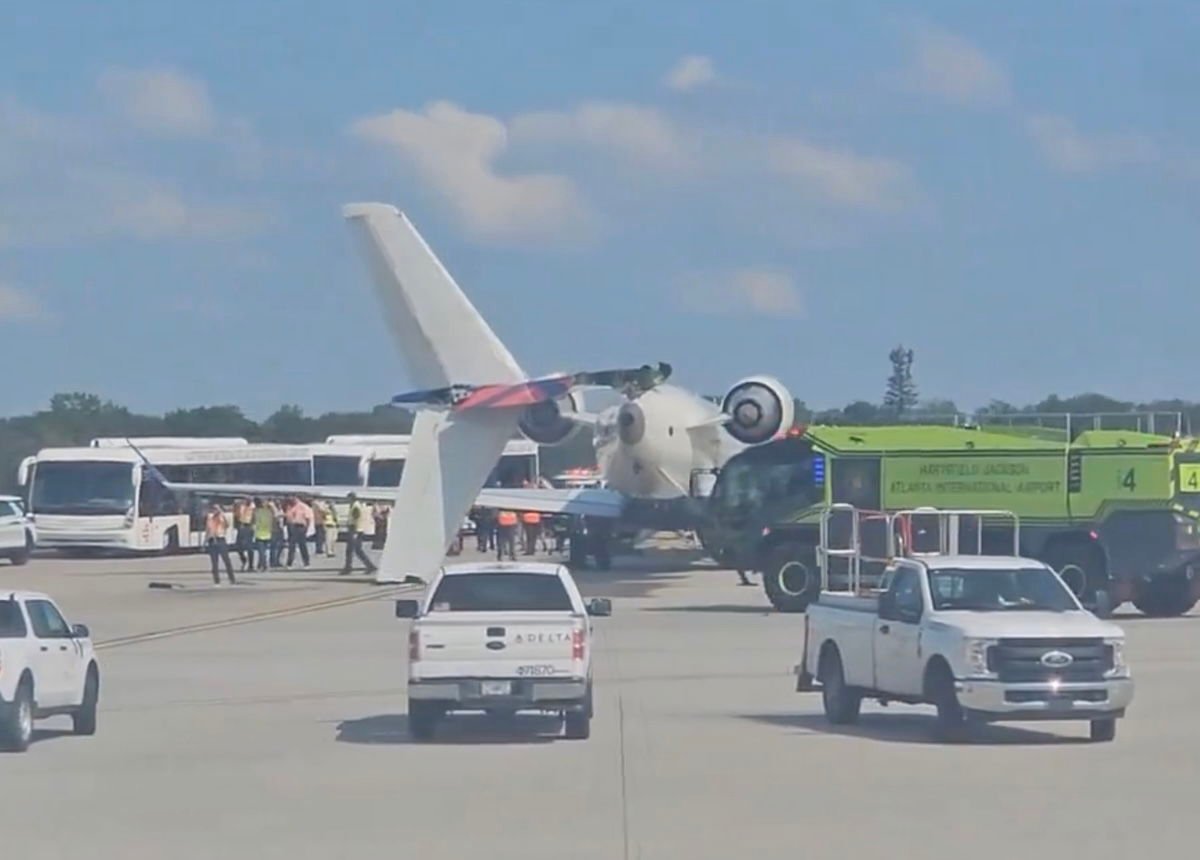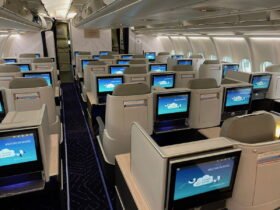Several weeks ago, we saw a bizarre incident in Atlanta, whereby one aircraft collided with another, and sliced off its tail. While we had a general sense of what unfolded, we didn’t know what the cause was.
The National Transportation Safety Board (NTSB) has now released its preliminary report about this incident, and I figured it’s worth covering. I don’t know what those Delta wide body pilots were thinking…
Basics of Delta’s bizarre A350 & CRJ-900 incident in Atlanta
For some background, this incident happened around 10AM on Tuesday, September 10, 2024. It involves two jets operating on behalf of Delta, which had a serious incident at Atlanta Hartsfield-Jackson International Airport (ATL). Specifically, this involves:
- A six-year-old Delta Airbus A350-900 with the registration code N503DN, which was scheduled to operate to Tokyo Haneda Airport (HND) as flight DL295, with 221 passengers onboard
- A 10-year-old Delta Connection Bombardier CRJ-900 (operated by Endeavor Air) with registration code N302PQ, which was scheduled to operate to Lafayette Airport (LFT) as flight DL5526, with 56 passengers onboard
Both jets were taxiing at the airport, when the Delta A350 literally sliced the tail off the CRJ-900 with its right wing. As you’d expect, both aircraft sustained damage, and flights ended up being canceled. The pictures of the damage to the CRJ-900 are kind of wild. Fortunately there were no serious injuries, though a flight attendant on the regional jet sustained a minor injury.
Shortly after the incident, the air traffic control audio circulated widely, and it made it clear that the Delta A350 pilots didn’t realize what had just happened, and they had no clue what they hit. Here’s what the communication was like following impact:
ATC: “Delta 295 heavy, hold short of V, advise me when you’re ready.”
DL295 pilot: “All right, we just hit something on the taxiway. Could you tell us what it was?”
ATC: “You know, I just noticed that the tail on the RJ is missing. So Endeavor 5526, hold your position, and do you require any immediate assistance?”
DL5526 pilot: “We’ll hold our position, and standby on the… no immediate assistance. We’ll need a tow, though.”
Unknown voice: “The whole tail of that CRJ is off.”
ATC: “Delta 295, hold short of V. It does appear that you struck the RJ that’s holding short of 8R.”
DL295 pilot: “Okay, that’s that we hit then. Yeah, we were on the centerline. Instructions were E, short of V. We’re holding short of V and understand, thank you.”
DL5526: “Yeah, we’re expecting there to be a hydraulic leak behind us. We’re showing dual hydraulic failure and system warning 3.”
ATC: “Endeavor 5526, roger, we’re going to go ahead and have the emergency vehicles come out and check you guys out. There is an operations vehicle behind you there. They’ll check out the taxiway, and if you need anything else, just let me know.”
The strangest part of that interaction is how the Delta A350 pilot’s defense is that they were taxiing on the centerline, and had been given clearance to go in that direction, as if they did nothing wrong. Right, but when you’re given taxi clearance, that doesn’t mean you can just smash through other planes. If there are planes in the way, or you don’t have enough clearance, you’re supposed to stop to prevent an accident.
The NTSB’s preliminary report into this incident
While the NTSB’s investigation into this incident is ongoing, a preliminary report has just been published, and it makes it pretty clear how this unfolded. Both planes were following taxi instructions, in the sense that they were going in the directions they were supposed to.
While not the root cause of the accident, the CRJ-900 definitely could’ve been a bit closer to the hold short line for the runway. The CRJ-900 was cleared to hold short of the runway, but there were around 56 feet between the nose of the aircraft and the line.
Ideally the plane would’ve been closer, but of course that doesn’t excuse another aircraft running into it. It’s up to the pilot of each aircraft to make sure they have sufficient clearance for where they need to go.
So, how did the A350 pilots end up striking this jet with their wing? After all, there were four pilots in the cockpit of the A350, including a captain, a first officer, and then a whole additional relief crew.
Shortly before the incident, the A350 crew received a navigational alert message, which required coordinating with maintenance. The captain was the one taxiing the plane, and in an interview, he indicated that as the plane approached the intersection where the CRJ-900 was parked, “he was looking straight ahead and to the left to avoid the left wingtip from impinging on opposite direction traffic coming off taxiway V.”
So he was looking left and straight ahead, and somehow no one was looking to the right, to see if there was clearance on the right side. Was the first officer just distracted trying to deal with the maintenance issue, rather than focusing on the immediate task at hand? This is quite an embarrassing rookie mistake, especially when you have four pilots up there.

The A350 was taxiing at 12 knots when it impacted the other jet. The CRJ-900 sustained lateral accelerations of 0.5 G left, followed by 0.55 G right, and the heading was rotated by nine degrees clockwise.
Bottom line
Several weeks ago, a Delta A350 and Delta Connection CRJ-900 had a pretty dramatic ground collision in Atlanta, as the A350 sliced the tail off the CRJ-900. While dents and dings happen every so often, it’s rare to see something this serious on the ground.
The NTSB has now released its preliminary findings from the incident. It would appear that the A350 pilots just weren’t being as careful as they should’ve been when taxiing the aircraft. The captain stated he was looking left and straight ahead, and it appears that nobody was keeping an eye on the right side of the aircraft, despite there being four people in the cockpit.
Meanwhile the CRJ-900 should’ve ideally been a few dozen feet closer to the runway, but that of course doesn’t justify another aircraft striking it.
What do you make of this incident, and the NTSB findings?













Leave a Reply